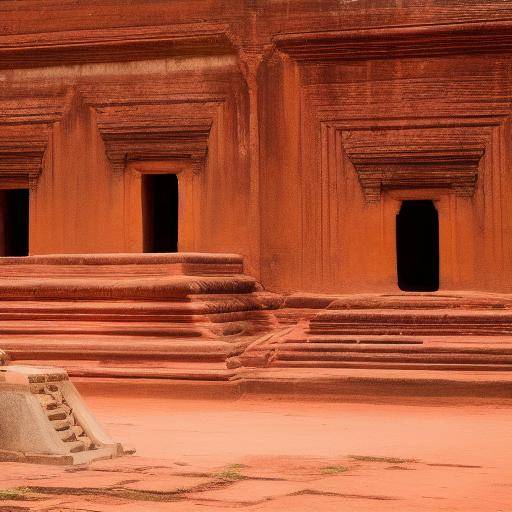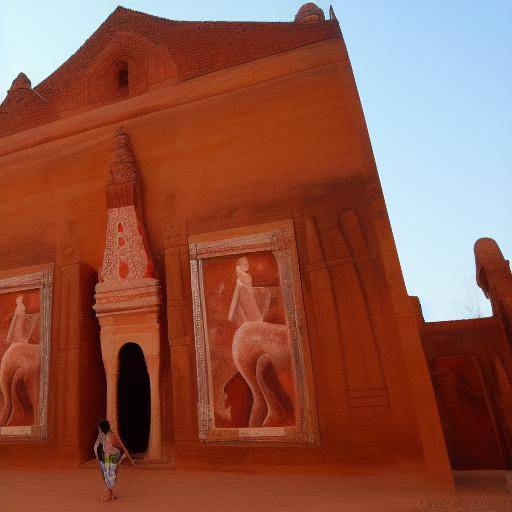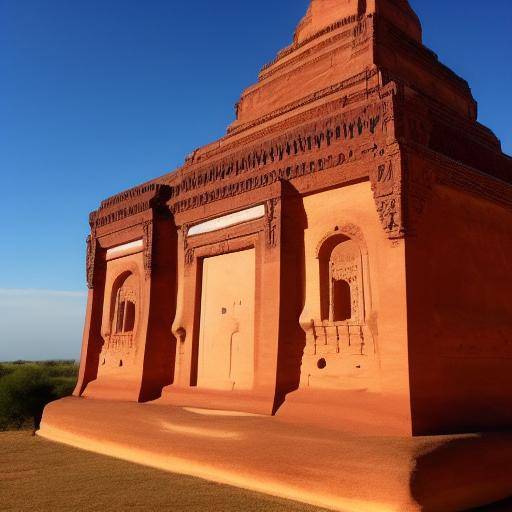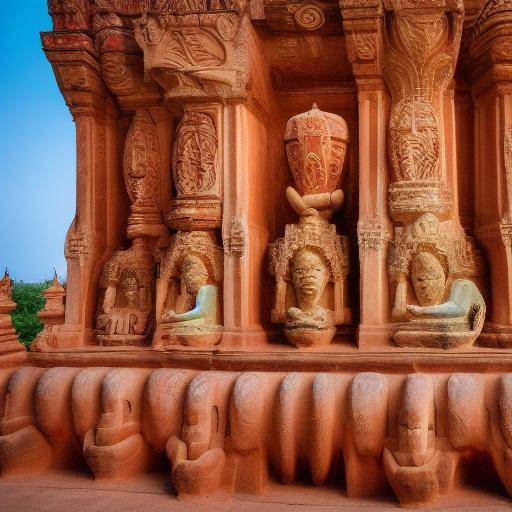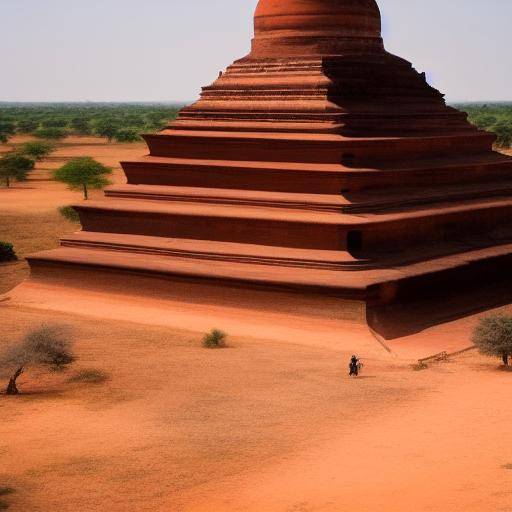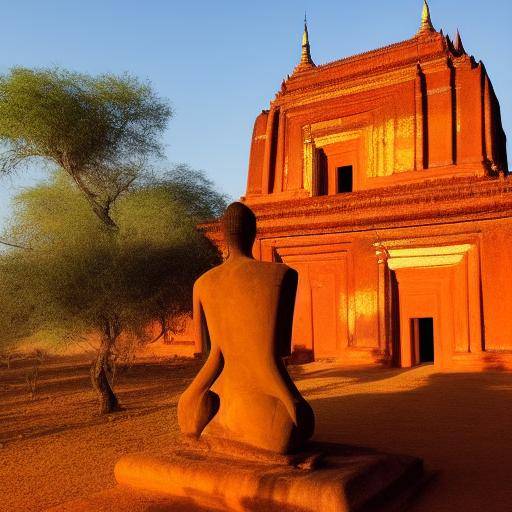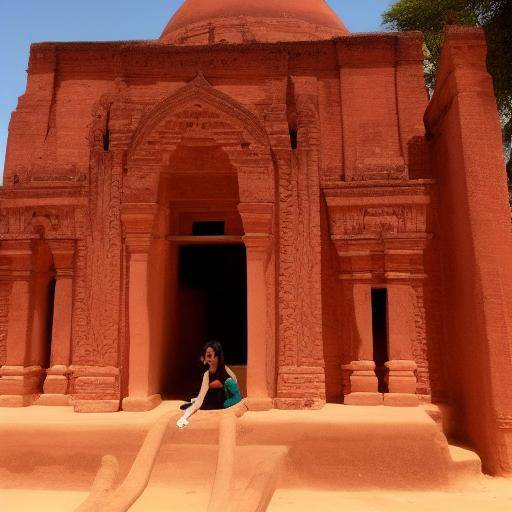
Introduction
Known as one of the archaeological wonders of the world, Bagan temples in Myanmar offer a unique experience that combines spirituality, art and architecture. This article invites you to explore the rich history and magnificent beauty of this site, giving you a detailed view of its cultural significance, its spiritual importance and its impact on Buddhist architecture. From its millennial history to its influence today, you will discover how the temples of Bagan represent an invaluable legacy that endures over time.
History and Background
The history of the temples of Bagan dates back over a thousand years, when Bagan was the capital of the Kingdom of Pagan in the eleventh century. This prosperous and powerful civilization contributed significantly to the development and expansion of Buddhism in the region. During his apogee, thousands of temples, pagodas and monasteries were erected, making Bagan an important centre of learning and religious devotion. The architecture in Bagan reflects the influence of various Buddhist schools and architectural styles, creating a unique landscape of spirituality and art.
The 13th century marked a crucial point in the history of Bagan, with the Mongolian invasion that caused the fall of the kingdom. Despite the devastation, many temples survived, thus preserving the rich cultural heritage of Bagan over the centuries. UNESCO has recognized Bagan as a World Heritage Site, highlighting its historical importance and its remarkable contribution to religious architecture.
Deep analysis
The spiritual influence of the temples of Bagan is not limited to its historical past, but remains a source of devotion and contemplation for Buddhists and visitors from around the world. The unique architecture of the temples, with its intricate details and elegant symmetry, reflects the deep connection between humanity and the divine. This spiritual legacy continues to attract pilgrims and tourists, offering a space for reflection and connection with the transcendent.
Comprehensive review
The temples of Bagan have experienced a renewed interest in the architectural and cultural field. The new conservation and restoration techniques are helping to preserve these ancient monuments for future generations, ensuring that this rich heritage remains intact. In addition, sustainable tourism and responsible temple care are important themes that generate debate and reflection in the global community.
Comparative analysis
In contrast to other archaeological sites and Buddhist temples, Bagan stands out for its extensive collection of religious structures dating back to several centuries. The architectural and spiritual diversity of these temples offers visitors a multifaceted view of Buddhism and its influence on Myanmar society and culture.
Practical Tips and Recommendations
If you plan to visit the temples of Bagan, it is essential to respect local traditions and follow appropriate behavior patterns. Dressing with modesty, showing respect for sacred places and participating in cultural and religious activities in a respectful manner, are some of the ways to contribute positively to the preservation and promotion of Bagan's heritage.
Industry Perspectives and Expert Reviews
Experts on archaeology, architecture and religious studies have expressed their admiration for Bagan's rich cultural heritage and the importance of preserving this unique legacy. Its perspectives provide a deeper understanding of the cultural and spiritual relevance of Bagan temples in the global context.
Case Studies and Practical Applications
Numerous case studies highlight the importance of Bagan temples as an invaluable heritage, not only from a historical point of view, but also as a source of inspiration for architectural design and spirituality. The adaptation of ancient techniques in the construction and architectural ornamentation of modern temples demonstrates Bagan's lasting influence on Buddhist art and architecture.
Future Trends and Predictions
The future of the temples of Bagan is intrinsically linked to conservation efforts and the promotion of sustainable cultural tourism. Current trends indicate an increase in global awareness of the preservation of cultural heritage and the importance of keeping alive the spiritual tradition of these temples.
Conclusion
The temples of Bagan embody the very essence of spirituality, art and architecture in Myanmar. His lasting legacy and influence have no paragon in the world, providing a unique connection between the past and the present. By exploring the historical and cultural wealth of these temples, we realize that their impact transcends the borders of time and space, inspiring present and future generations to appreciate and preserve their precious legacy.
Frequently asked questions
1. What is the best time to visit the temples of Bagan?
The best time to visit the temples of Bagan is during the dry season, which goes from November to February. During this period, the weather is cooler and dry, providing ideal conditions to explore temples and enjoy spectacular views.
2. What is the spiritual importance of Bagan temples for Buddhists?
The temples of Bagan are considered sacred by Buddhists, as they represent centers of meditation, devotion and spiritual learning. For many Buddhists, visiting Bagan is a deeply meaningful and enriching experience.
3. What is the impact of tourism in the temples of Bagan?
Tourism has a significant impact on the temples of Bagan, as it can both contribute to its conservation and pose challenges related to sustainable management and the preservation of cultural heritage.
4. What is the role of Bagan in the historical and cultural context of Myanmar?
Bagan plays a central role in Myanmar's history and culture, symbolizing the country's rich religious and architectural heritage. Its influence extends to the Buddhist architecture, art and spirituality of the region.
5. What are the current measures to preserve the temples of Bagan?
Various measures have been implemented to preserve Bagan temples, including conservation programs, archaeological research and the promotion of responsible cultural tourism, in order to ensure long-term preservation.
6. How has Bagan influenced Buddhist architecture worldwide?
Bagan has exerted a significant influence on Buddhist architecture worldwide, serving as a source of inspiration for designers, architects and scholars interested in Buddhist tradition and architectural expression.
In short, the temples of Bagan in Myanmar represent a unique fusion of spirituality, art and architecture that transcends time and space. Their cultural and historical importance gives them a prominent place in the world landscape, inspiring admiration and devotion in all those who have the privilege of exploring their majesty.

